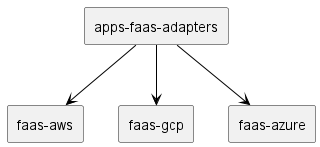FaaS Projects
Introduction
Function-as-a-Service (FaaS) is a cloud computing model that allows developers to execute small, stateless functions in response to events, without managing underlying infrastructure.
FaaS computing is a cloud execution model where the cloud provider handles the provisioning, allocation, and management of servers for code execution. This model abstracts the infrastructure from developers, enabling them to focus solely on writing and deploying functions. FaaS functions are triggered by events—whether HTTP requests, database changes, or messaging queues—and scale automatically based on incoming loads.
By adopting FaaS, developers gain the freedom to create agile, efficient application components capable of addressing the needs of modern cloud-based environments. FaaS provides routing for client requests, scaling resources dynamically, and bridging services by encapsulating logic with minimal overhead.
We can create a modular set of business workflows and domain-driven logic without being tightly coupled to specific frameworks or environments. These components can be reused across multiple deployment styles, including microservices on containers and FaaS platforms, all sharing the same base code.
In the Clean Architecture1 paradigm, FaaS functions naturally act as primary adapters, encapsulating logic that transforms incoming requests and interfaces into structured workflows. These functions sit at the boundary of the system, bridging the external world with core logic while maintaining modular flexibility.
For competitive software development, demonstrating flexibility across different deployment architectures is key. Customers may want to leverage the full arsenal of services available on the market, and FaaS provides that adaptability and scalability. We must remain open to various implementation approaches to meet their needs, whether through containerized architectures or serverless deployments.
Project structure
Popular FaaS Platforms
FaaS Architecture
FaaS architecture is a subset of serverless computing, designed specifically to execute stateless functions in response to events. These functions form the building blocks of applications by encapsulating business logic, reducing complexity, and ensuring scalability.
Key Characteristics of FaaS
- No Server Management: Developers write and deploy functions without managing or provisioning servers—this is entirely abstracted by the cloud provider.
- Event-Driven Execution: Functions are invoked in response to external triggers (e.g., HTTP requests, file uploads, database updates, or queue messages).
- High Scalability: Functions automatically scale based on demand, ensuring quick response to variable workloads.
- Stateless Design: Functions are designed to run independently, without relying on persistent server state, making them highly lightweight.
- Cost-Effective: Pay-as-you-go pricing ensures you only pay for the exact compute time used, making this model ideal for applications with sporadic or unpredictable traffic.
 Macha
Macha
